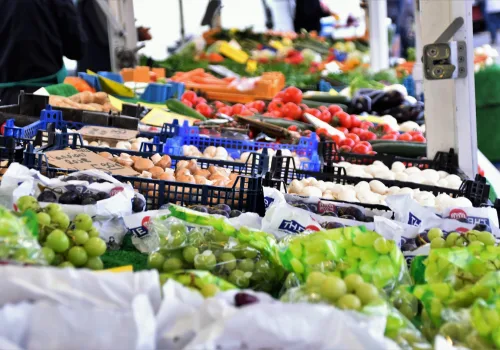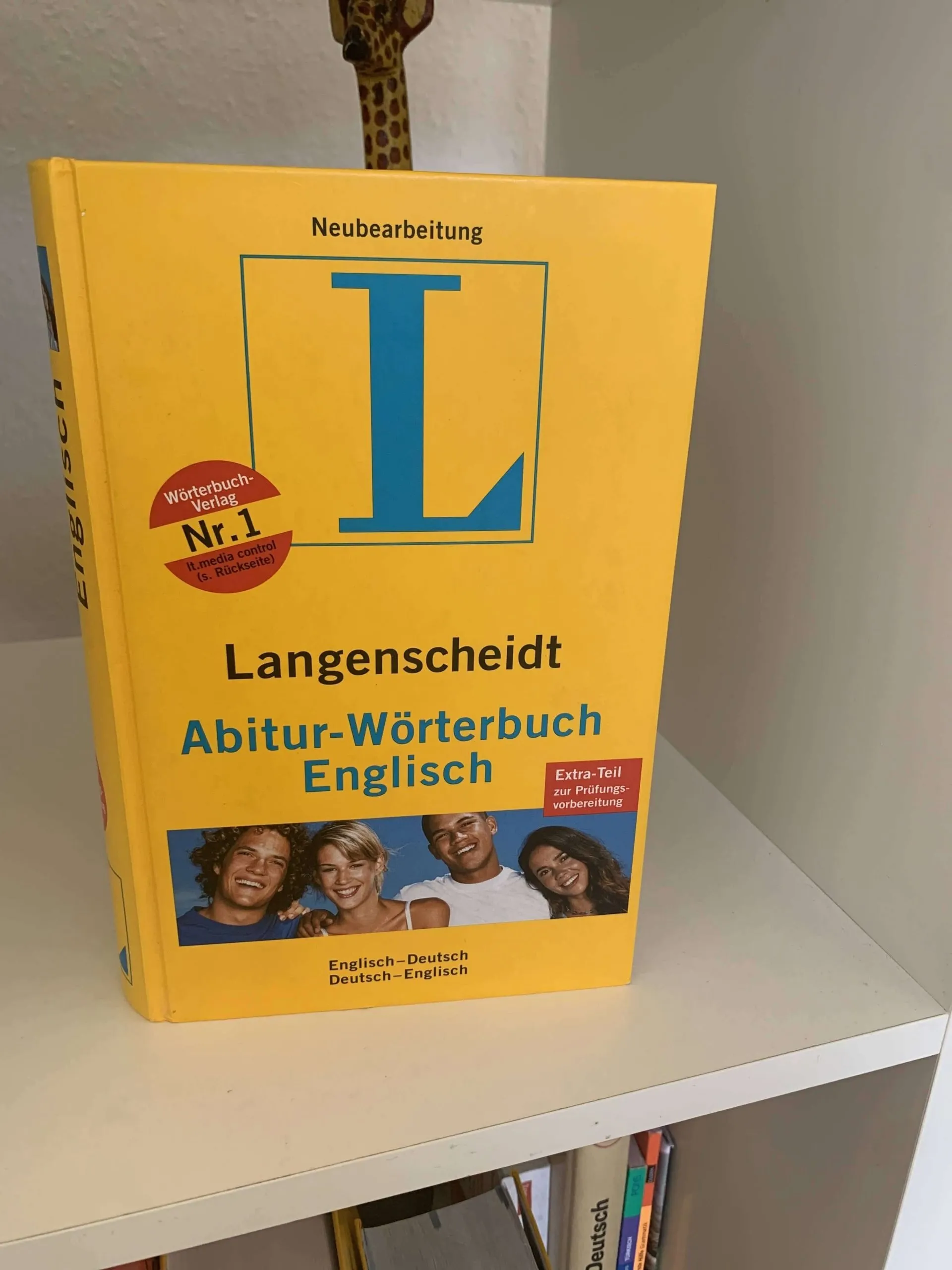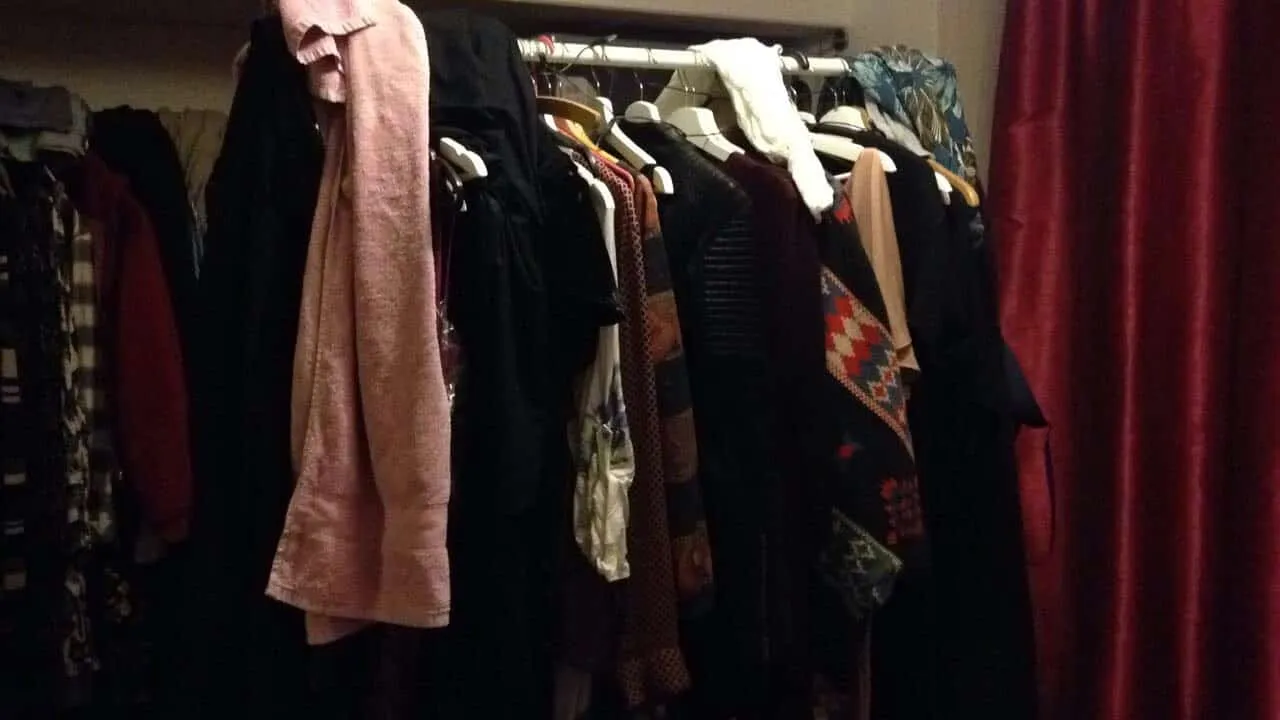It is common to see people in Germany leave boxes full of clothes, books, and other things in front of their apartments or on the street. In Germany, living a frugal life is made much easier by the kind people who want to give their belongings a second chance at life. These boxes would usually be marked “zu verschenken” which means “to giveaway”. This act of not “throwing away” what you do not need but “passing it on” is a common sustainable practice all over Germany.
If in such a labeled box, there are some things that catch your eye, you can scan the contents of the box and take whatever you think you may need. Once you get over the initial “shame” of going through somebody else’s “discarded” stuff, you could have experiences of finding really cool stuff in the boxes. Perhaps you see a black dress with the size label still on it for giveaway. If you think that dress will fit your friend and would look good on her, there is no reason why you should not take it!
When did give-away culture begin in Germany?
Older Germans remember this culture to have always existed in Germany. However, some people say that keeping things out for “zu verschenken” has been increasing only over the past years. They feel that perhaps the reason for this is the rising environmental consciousness of the German people.
Evelyn from Potsdam tells us, “Especially in East Germany, after the fall of the wall in 1990, many people wanted to get rid of their old things. They were eager to explore the new buying options that were suddenly available to them. Hence, they decided to remove their old furniture. The easiest option was to put them out on the street”.
This culture continues even today and sometimes, people put very valuable antique things out on the street for giveaway without really knowing their value. Some people have made it a hobby to assess the value of things found in the “zu verschenken” boxes. In some cities, there are even a group of “collectors” who check the streets regularly for things of value. They then resell these to collectors and sometimes get paid hefty amounts. Almost like a “zu verschenken underground network”!
How is giving away a sustainable practice?
Most things in a household are non-disposable. This means that they are made for multiple uses rather than single-use (disposables like paper bags, takeaway boxes, etc.). When non-disposable things are out of use, the next best option is to reuse them. Reusing can mean purchasing non-disposable items or handing down a used item to another person for continued use. Giving away ensures that non-disposables have a second life and promotes the sustainable use of the available global resources.
Since furniture is the least-recycled item in a household, it is not surprising to know that 9.8 million tons of furniture go to landfills every year. Moreover, 7-12% of landfills are made up of old clothing and textile waste. The incineration that follows is extremely harmful to the environment. Rather than filling up landfills or incinerating these partly used items, passing them on is the more sustainable practice.
Advantages of giving away (and taking things away!)
In addition to the environmental benefits, giving away also has a social aspect to it. The decluttering guru Marie Kondo says, “If something does not spark joy in you, throw it away”. Easier said than done? For some people, it is very difficult to let go of things. But what if those things could bring joy to somebody else? Wouldn’t it be easier to give away your things if you could be the reason for the twinkle in their eye?
Giving away things can be fun and therapeutic. They also contribute to the idea of solidarity amongst people. Most neighbourhoods in Berlin have a shelf in the corner. If you do not want something anymore, you can leave it on these shelves. When you do this, you are thinking that “someone else could use this” which in itself, is a very nice thought.
Careful!
What you can find in these boxes however also depends on the area of the city. Be careful of broken things. Some people put things that are broken in a giveaway box just to reduce their household waste. Some others cause a public nuisance by putting out garbage on the street as “zu verschenken”. Carefully going through the materials you are about to take away will ensure that the taker and the giver are both satisfied.
In some instances, you might find expensive things outside houses without a “zu verschenken” sign, which could make you confused whether they were actually intended for giving away. For example, who would give away an Italian-made drone camera? Unless there is a sign that says “zu verschenken” or the things are kept on a giveaway shelf, it is recommended that you do not take those things. Some things could be kept outside when people are moving in or moving out. We know of a case when the owner kept a chair outside his house to summon help to carry it in. However, by the time he came out of the house, the chair had already been taken away by someone!
Now moving to an entirely different giveaway. If you are part of a startup, you must know that giveaways or prize promotions may be necessary to get a wider reach for your product or service. However, there are some rules regarding company giveaways in Germany. The rules are in place so that prize promotions linked to purchases must not exert any psychological pressure on consumers’ purchase decisions. Although both prize promotions and competitions are legally permitted according to German laws, there are certain rules and conditions for this kind of giveaway which you must take note of.
Other alternatives?
In Germany, there is also an elaborate process of calling the city administration to take away things that you do not use anymore. This is called “Sperrmüll”. In some places, unwanted things are collected by the city once or twice a year from the people of a neighbourhood, thus making it a collective cleanup. After fixing a date, the garbage truck comes and takes away all your things for free. However, this does not guarantee that the things you throw away will get used again in their intact form.
If you would like to put some old books that you collected to good use, an alternative to give away is to contact rettet buecher (rescue books). They pick up the books from your house (from Berlin or the südwestlichen Umland) and save books that are too good to be thrown away.
eBay, swap sites, and Facebook groups all help in cycling things from one person to another. eBay Kleinanzeigen has a separate category of things you can take away for free. Although all these options are excellent, giving away to nearer neighbourhoods advocates for shorter distances between the seller and buyer. This significantly reduces the consumption of energy and time. Hence we highly recommend using the good old-fashioned “zu verschenken” method!
Not strictly giveaway but…
An alternative reuse option is second-hand shopping. There are many brands committed to sustainability that offer good quality used items. Check out our next article to know more about second-hand culture in Germany.
Conclusion
The 3 R’s (reduce, reuse, and recycle) are the golden words touted as the most important rules for sustainable living. With giving and taking away, you already practice one of the R’s i.e., Reuse. Remember that by passing on things that you do not use anymore, you reuse things that would have otherwise ended up in a landfill.
As the age-old adage goes “what you give is what you get”. Hence, although taking from giveaway boxes is very exciting, don’t forget to also give. Living in Germany, we as expats need to adopt and promote this giveaway culture. What you find next on the street may, who knows, save you a trip to Ikea!










Leave a Reply